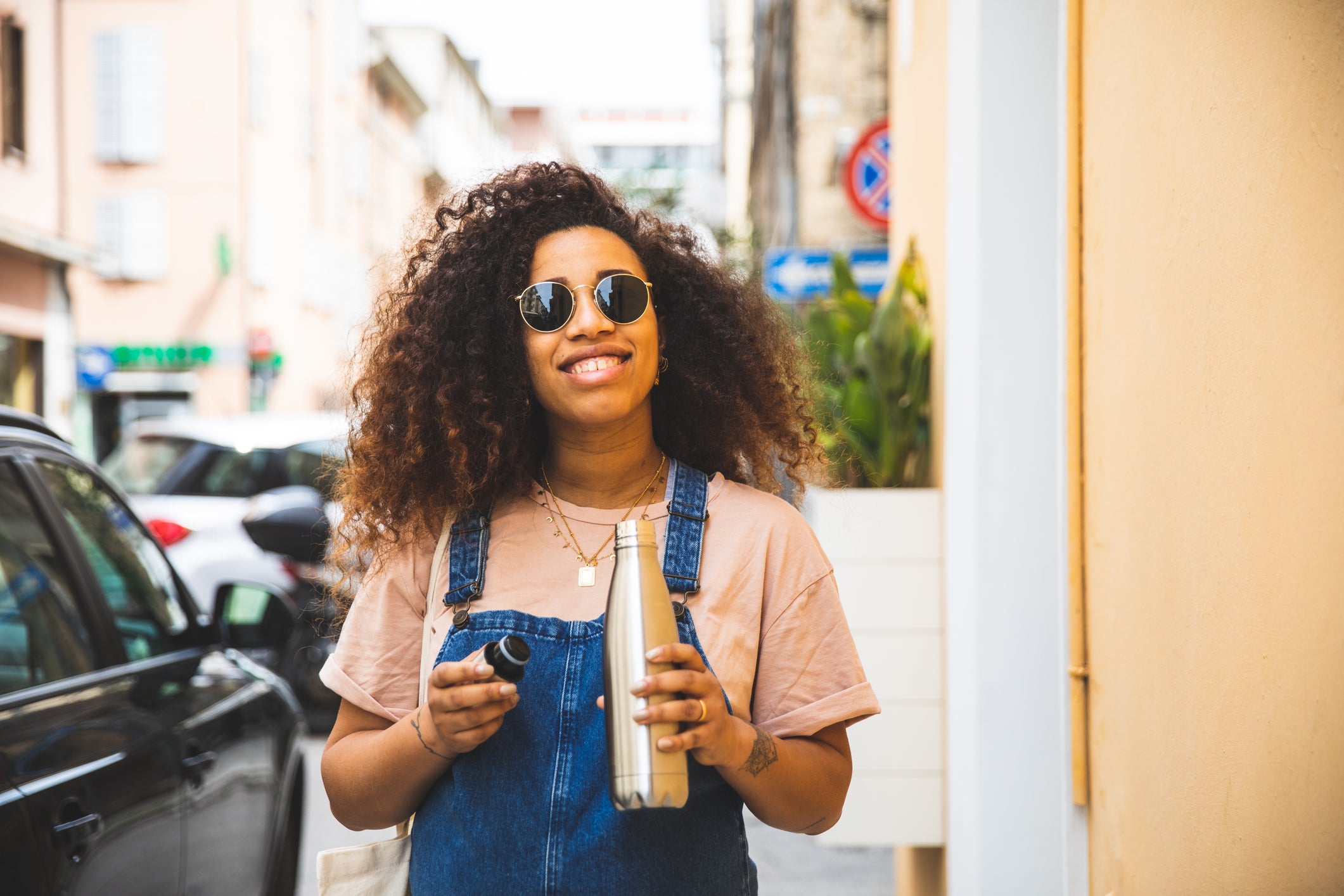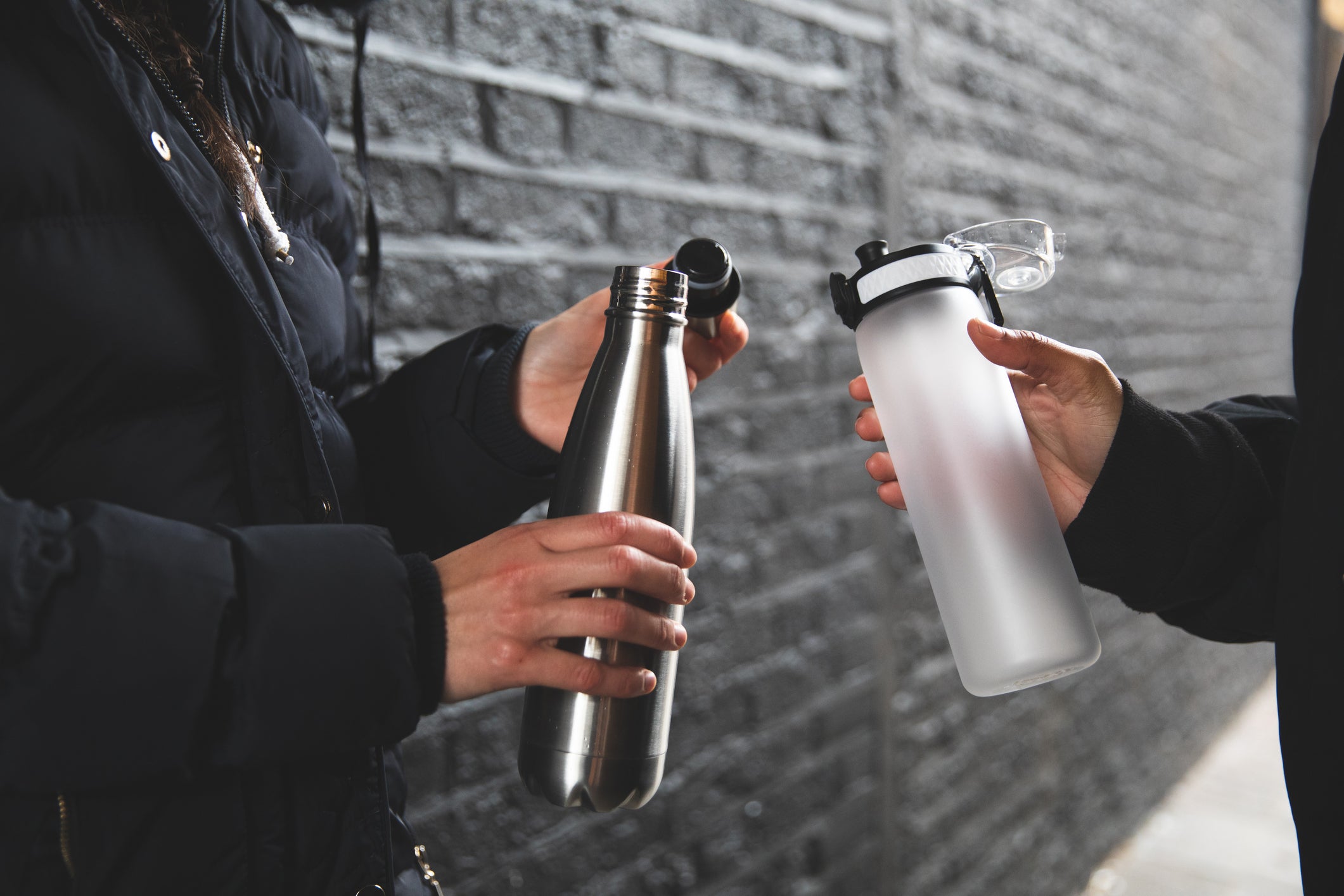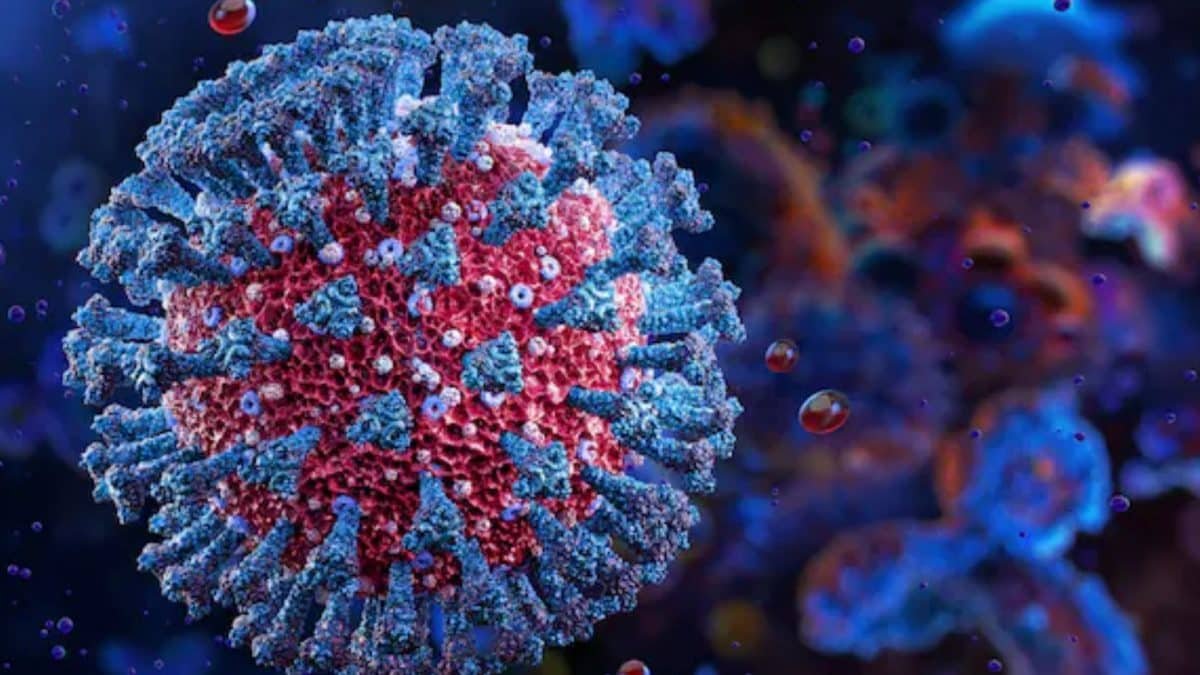Here’s an unexpectedly confronting question: when did you last clean out your reusable water bottle? You know, the one that you’ve been toting around with you from the train to the office to the gym ad infinitum. The one that’s developed a suspicious layer of grot around the lid that you’re trying not to think about. That you accidentally left festering in the car on a swelteringly hot day. And when I say clean, I’m not just talking about a cursory slosh of fresh water and a bit of damage control around the neck – I mean a proper scrub, or at least a go-around in the dishwasher.
If we’re being entirely, unflinchingly honest, the answer for most of us is probably something along the lines of “I’ve left it a little bit longer than I should have.” It’s all too easy to just throw your bottle in your bag before racing out the door, and make cleaning it a problem for tomorrow. Or the day after. But the stomach-churning truth is that our trusty vessels are actually harbouring quite a staggering amount of bacteria, often without us even realising it. In 2023, researchers from the US company Water Filter Guru swabbed reusable bottles and found that the average one was 40,000 times dirtier than a toilet seat. It’s enough to put you off your recommended two litres per day.
Over the past decade or so, we’ve gradually become more aware of exactly what our (disposable) bottled water habit has been doing to the environment. The average single-use plastic bottle can take around 450 years to break down in landfill, shedding tiny particles known as microplastics as it decomposes. These build up in the soil and in the oceans, accumulating in the food chain and eventually cropping up in the stuff we eat; they’ve also been linked to a whole range of health problems, including hormone disruption and various cancers.
Against this backdrop, the reusable bottle has emerged as an everyday hero. Using one instead of opting for throwaway plastic feels like a straightforward swap (as well as being an easy way to broadcast to society that, yes, you are an environmentally conscious citizen). And in recent years, these once-humble items have even become something of a status symbol. Just look at the improbable rise and rise of the uber-trendy Stanley Quencher cup. Once the sole preserve of outdoorsy types, these stainless steel beakers with flippy, sippy straws have been embraced with open arms by hydration-conscious Gen Zs. Pop into any pilates class and I can guarantee that the studio floor will be littered with Quenchers in every shade of the rainbow.
Considerably less glamorous, though, is the sheer amount of bacteria that many of these receptacles are harbouring. “Bacteria grow in bottles due to moisture, warmth and nutrients, from saliva or drink residue,” explains Dr Bruno Silvester Lopes, a lecturer in microbiology and epidemiology at Teesside University. They can “start multiplying in as little as 20 minutes”, he adds, “and in 24 hours can reach a staggering billions or even trillions of cells”.
If you’ve ever noticed a slightly clammy layer building up on the inside of your bottle, congratulations, you’ve achieved the dubious honour of cultivating a “biofilm”. This is “made up of collections of microbes, such as bacteria, that stick to each other and surfaces”, Lopes says; it’s also a pretty clear warning sign that your bottle-cleaning regime is not up to scratch. “Imagine biofilm like a Lego city built by bacteria,” he suggests. In his analogy, the loose Lego pieces are the bacteria, and “as they stick together, they form a strong protective layer that is hard to remove, similar to a Lego city that is more difficult to tear apart”.

Common bacteria found in dirty bottles include Staphylococcus aureus (often referred to as “staph”), E coli and Pseudomonas species, explains Dr Suzanne Wylie, a GP and medical adviser for IQdoctor. While “healthy individuals may not experience immediate problems”, she says, “these bacteria can pose a risk, particularly to young children, the elderly, or anyone with a weakened immune system”. Exposure, Wylie adds, might result in symptoms such as gastrointestinal upset or sore throat.
And if you’re using your bottle for more exciting drinks than just water – mixing up a protein shake, for example, or sipping on fruit juice – then you’re probably making matters worse. The process, Dr Wylie says, is “exacerbated by the presence of sugary drinks or milk-based liquids, as sugar and protein residues provide a rich nutrient source for bacteria and fungi”. So, when you chuck a supplement powder into your drink or add a slice of fruit for flavour, it’s not just yourself getting nourishment; you’re also feeding a whole ecosystem of lucky microorganisms.
In 2023, researchers from the US company Water Filter Guru swabbed reusable bottles and found that the average one was 40,000 times dirtier than a toilet seat
You probably won’t be all that shocked to learn that the rim of the bottle tends to be the spot with the highest concentration of bacteria, “due to frequent contact with the mouth”, as Lopes puts it. Plus, if you really want to get into the nitty gritty, tiny traces of food can get caught here, especially if you’re sipping and eating at the same time, and bacteria can use these to grow faster and better form that murky layer of biofilm.
And if you’re a Stanley cup owner, you might want to look away now. Bottles with built-in straws or spouts can be particularly problematic, Wylie notes, “especially those with complex parts that are difficult to clean”. “The small crevices can trap moisture and debris, providing ideal breeding grounds for bacteria,” she adds. If you really want to be put off your beloved sippy cup for good, a study from Water Filter Guru found that straw-topped bottles contained 14 times the bacteria you’d typically find in a pet’s bowl. Grim.

Whatever type of bottle you prefer, you should absolutely make the time to wash your bottle out daily, Wylie says, using warm water and washing-up liquid, paying particular attention “to the rim, lid and any straws or moving parts”. A bottle brush, specially made to fit inside narrow-necked designs, is probably a better option than using a harsh scouring pad; these might scratch the inside, creating tiny crevices where bacteria can lurk (and thus potentially making the problem worse). Lopes also recommends soaking the bottle with diluted vinegar, lemon juice or baking soda on a weekly basis for a proper deep clean.
The way you dry your bottle is just as important, too: microorganisms love moisture, so putting the time in to properly wash it out without finishing the job feels self-defeating. Wylie recommends that bottles “should be left to air dry completely with the lid off”.
Stainless steel bottles are generally more hygienic than plastic ones, as they are less likely to develop microabrasions
And if your emotional support bottle is giving off a persistent dodgy smell when you open it, has visible mould, or looks cracked or warped on the surface, Wylie says, you should ditch it entirely. When you’re next shopping around, it’s worth bearing in mind that “stainless steel bottles are generally more hygienic than plastic ones, as they are less likely to develop microabrasions that can harbour bacteria”. Glass is another hygienic option, albeit potentially risky for the clumsier among us.
Essentially, Wylie adds, as long as you’re cleaning your reusable bottle, drying it thoroughly and not hanging on to it past its prime, there’s no need to be having biofilm-related nightmares. And if you don’t? That’s your prerogative, but don’t say I didn’t warn you.
#Admit #youre #cleaning #reusable #water #bottle



